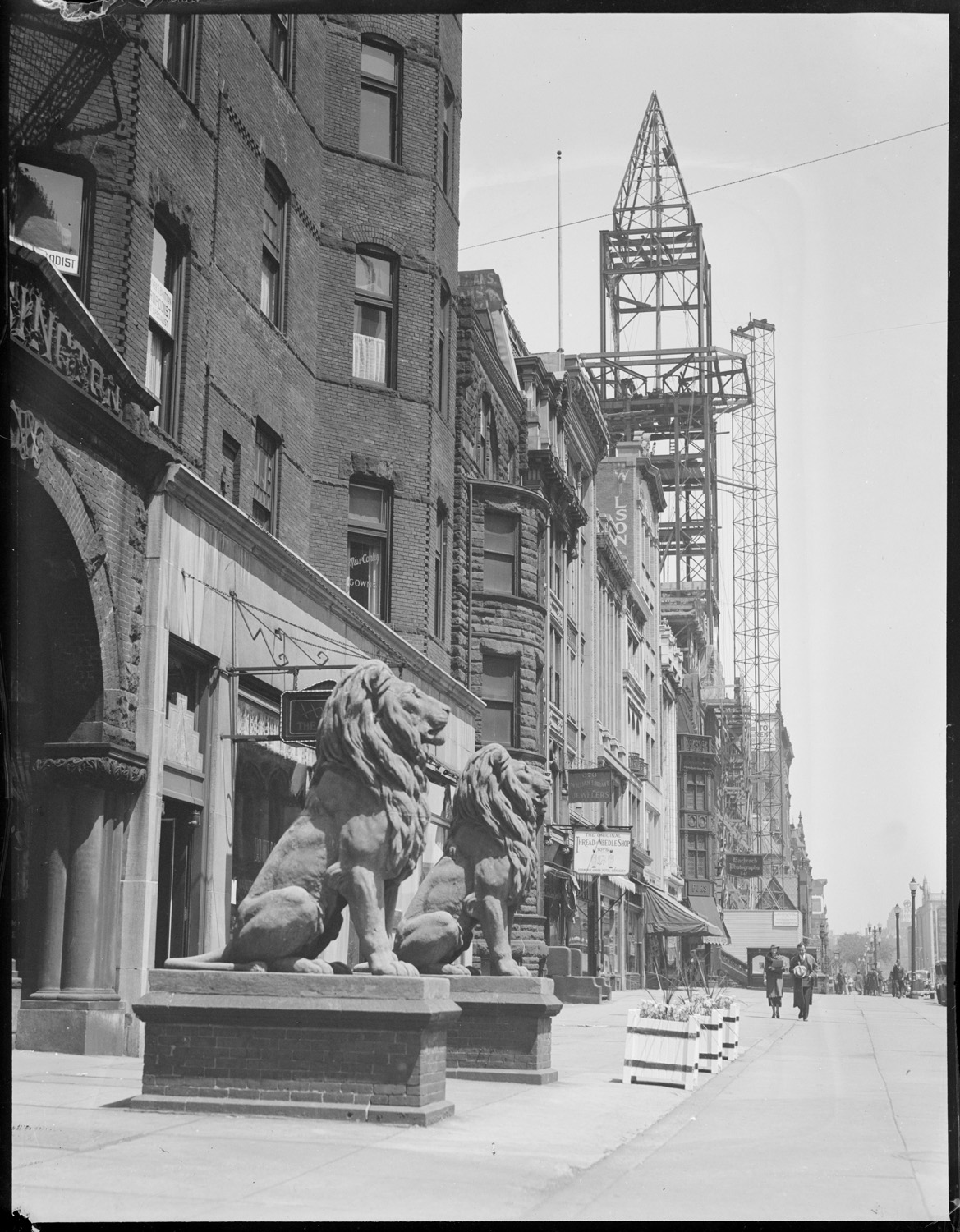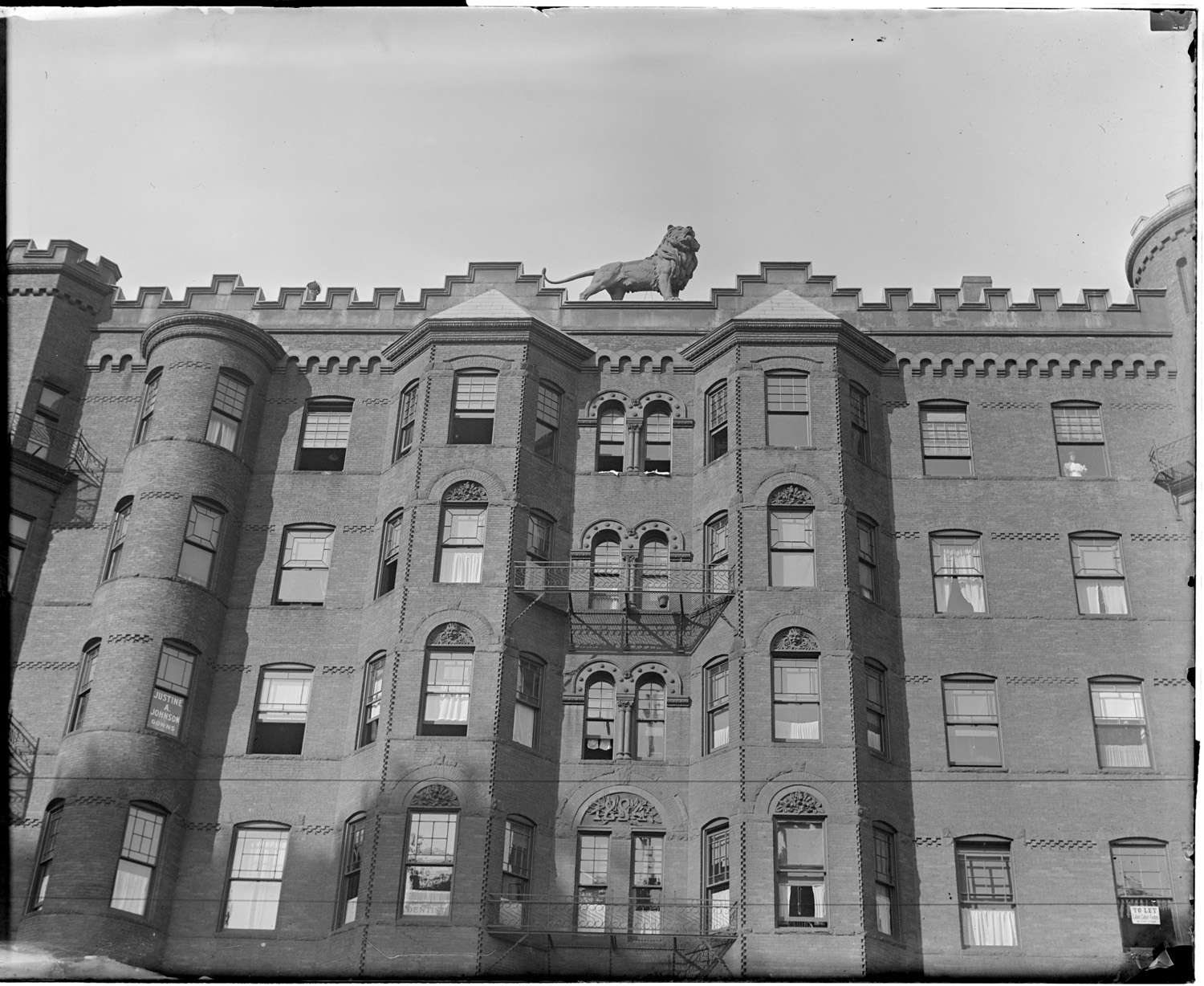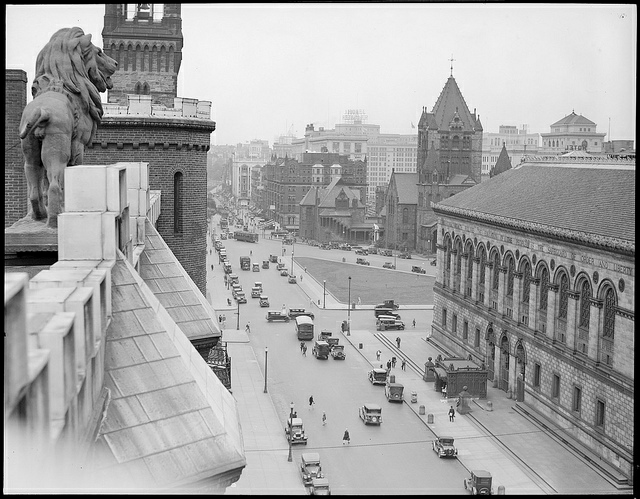Hi all,
I joined this forum in the hopes that we might be able to brainstorm on the whereabouts of a missing architectural lion. It's of interest to me as an alumni and unofficial historian of the Cambridge School, which resided in that building from 1958 to 1964*. The school's mascot, a lion was inspired by these sculptures.
As some of you know, the former Kensington Building (a.k.a., the Hotel Kensington) was across from the Boston Public Library at 687 Boylston St. had two lions which flanked the front.
The lions were sculpted in 1899 by Alexander Pope, a Boston Artist when the building was erected.
The Kensington was razed in 1967. The lions on ground level guarded the vacant lot until they were removed to the Copley Plaza hotel in 1974.
So here's the rub. When the building was constructed, a third lion was placed atop the Kensington. Some unknown years later, the lion was removed due to safety concerns regarding its weight. It's destination is unknown.
The first image (New Old Copley Church under construction) is from 1929.
The other two are from 1931. Photos courtesy of the Boston Public Library.



I read your earlier thread,
http://www.archboston.org/community/showthread.php?t=2220&highlight=kensington+lion
but felt this needed a separate topic.
I wonder who at Harvard would know the whereabouts of the uncovered lions. Thoughts or suggestions? Thanks!
* - The Cambridge School (of Broadcasting, of Business) was the predecessor to the now-defunct Grahm Junior College, which removed to Kenmore Square in 1964. During the "Kensington Years", GJC owned or rented houses on Exeter and Comm Avenue for use as dormitories.
I joined this forum in the hopes that we might be able to brainstorm on the whereabouts of a missing architectural lion. It's of interest to me as an alumni and unofficial historian of the Cambridge School, which resided in that building from 1958 to 1964*. The school's mascot, a lion was inspired by these sculptures.
As some of you know, the former Kensington Building (a.k.a., the Hotel Kensington) was across from the Boston Public Library at 687 Boylston St. had two lions which flanked the front.
The lions were sculpted in 1899 by Alexander Pope, a Boston Artist when the building was erected.
The Kensington was razed in 1967. The lions on ground level guarded the vacant lot until they were removed to the Copley Plaza hotel in 1974.
So here's the rub. When the building was constructed, a third lion was placed atop the Kensington. Some unknown years later, the lion was removed due to safety concerns regarding its weight. It's destination is unknown.
The first image (New Old Copley Church under construction) is from 1929.
The other two are from 1931. Photos courtesy of the Boston Public Library.



I read your earlier thread,
http://www.archboston.org/community/showthread.php?t=2220&highlight=kensington+lion
but felt this needed a separate topic.
I wonder who at Harvard would know the whereabouts of the uncovered lions. Thoughts or suggestions? Thanks!
* - The Cambridge School (of Broadcasting, of Business) was the predecessor to the now-defunct Grahm Junior College, which removed to Kenmore Square in 1964. During the "Kensington Years", GJC owned or rented houses on Exeter and Comm Avenue for use as dormitories.
Last edited:

